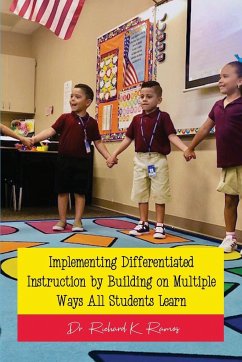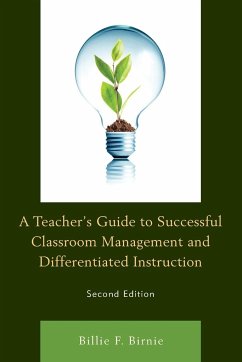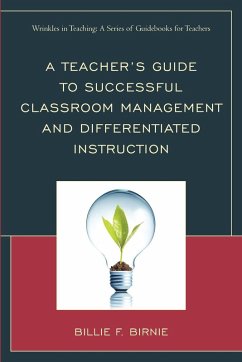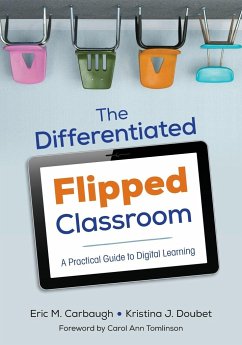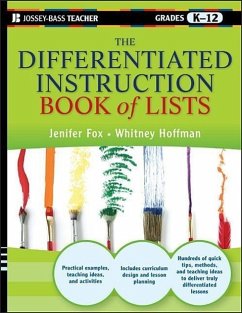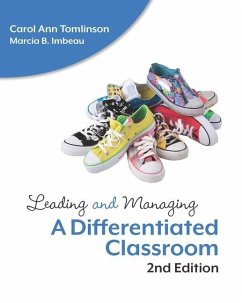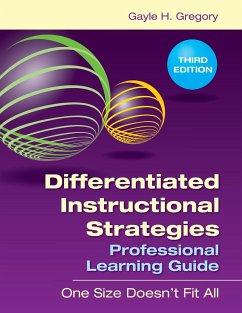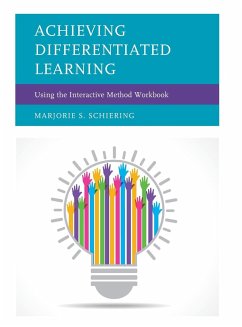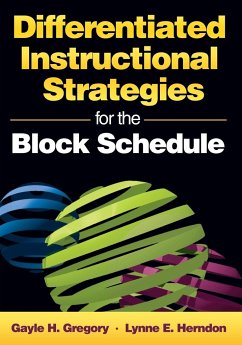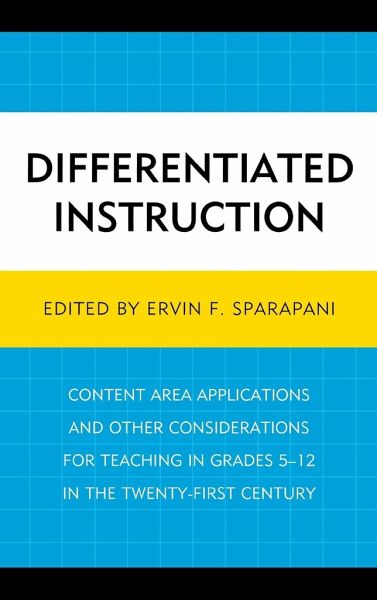
Differentiated Instruction
Content Area Applications and Other Considerations for Teaching in Grades 5-12 in the Twenty-First Century
Herausgeber: Sparapani, Ervin F.

PAYBACK Punkte
49 °P sammeln!
In the current standards-based, accountability-driven world of education, it is difficult for educators to use differentiated instruction to cater to the individual learning needs of each student. This book explains differentiating instruction in a way that connects to current standards and provides examples of challenging best practice lessons.






